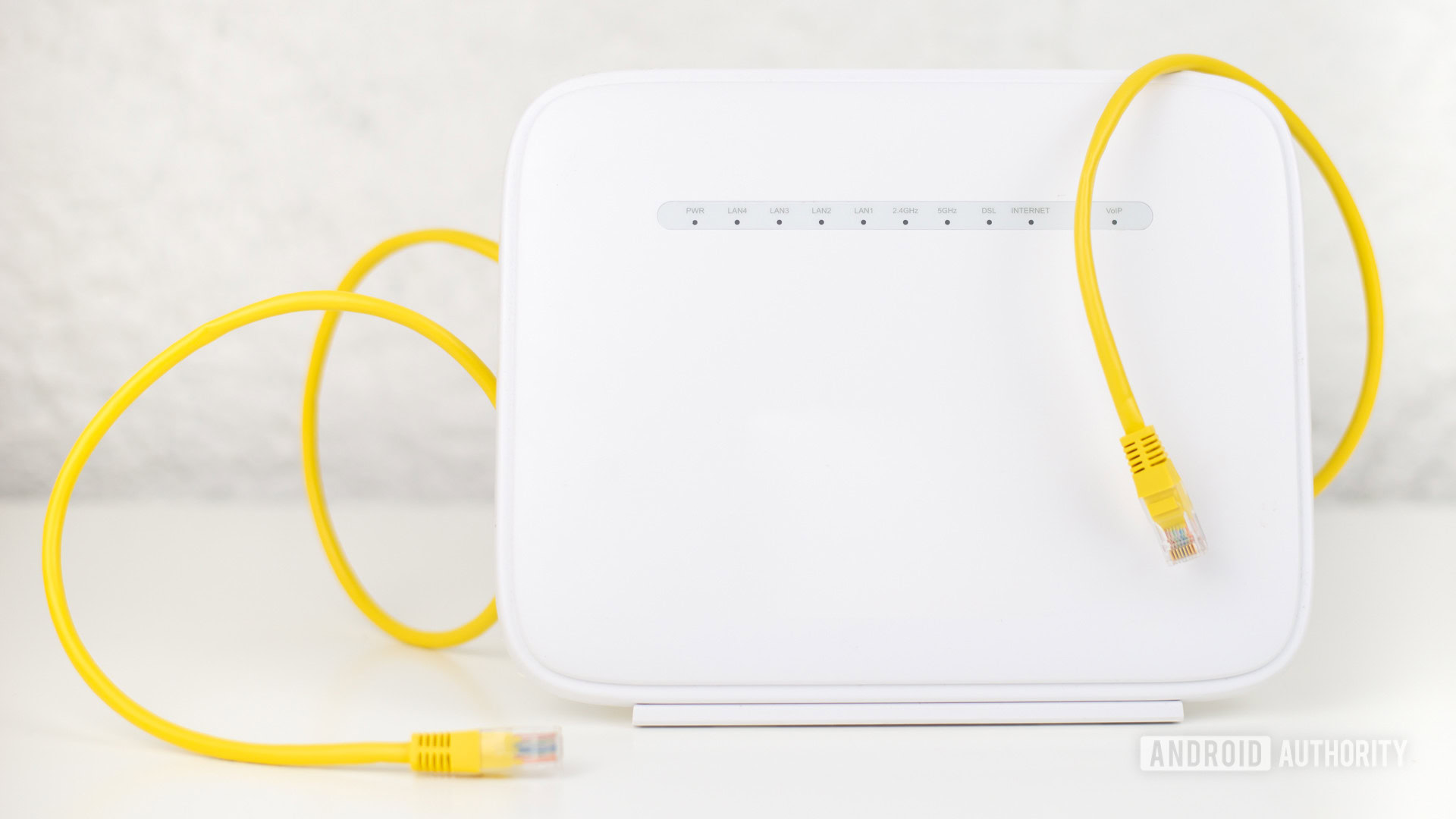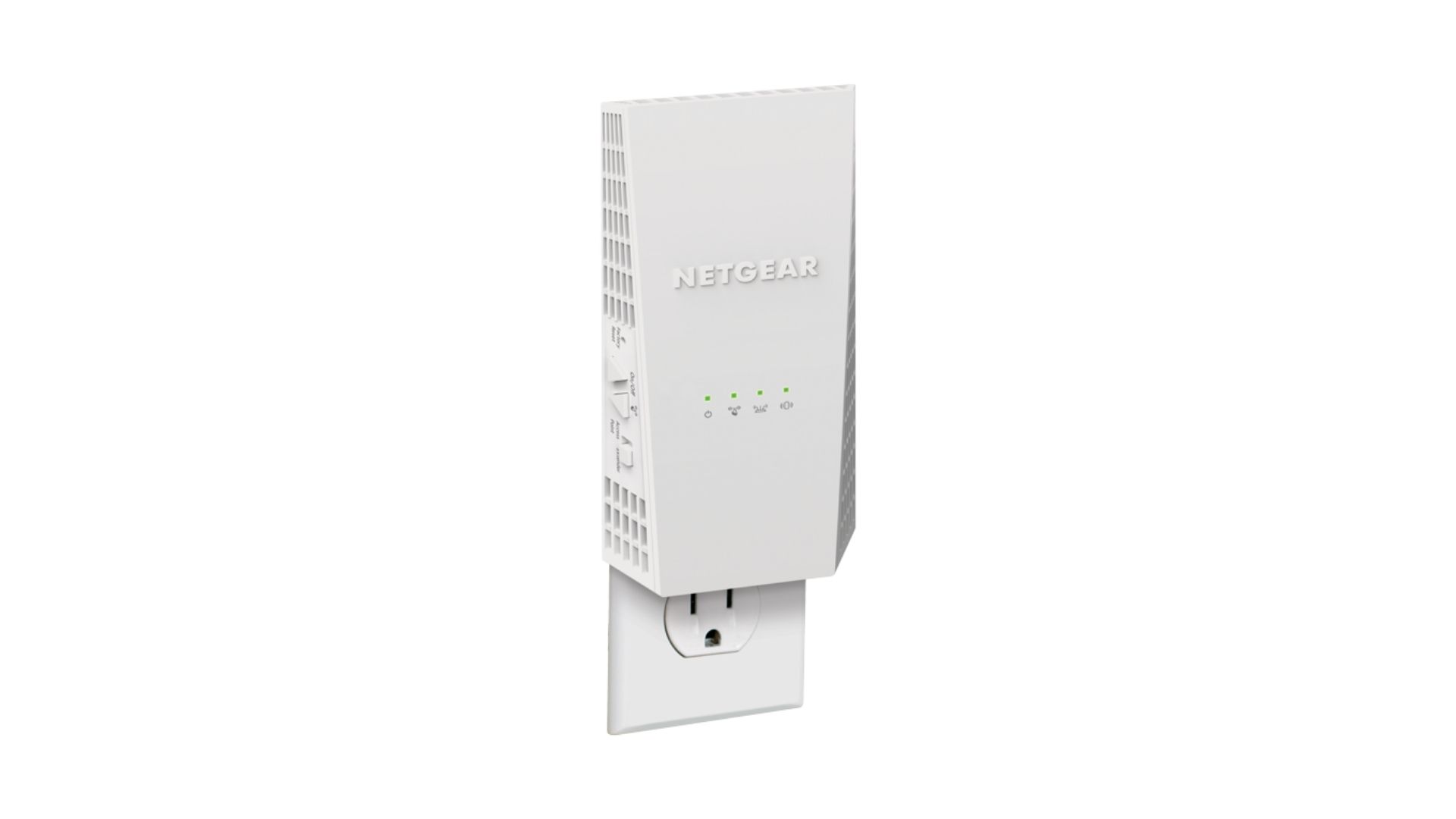Affiliate links on Android Authority may earn us a commission. Learn more.
How to increase internet speed on your Wi-Fi router
Wi-Fi is an incredible convenience. It doesn’t just let us use phones and tablets to their full potential. It has freed up home design and expanded its options. This includes smart TVs that don’t need an Ethernet cable snaking through walls, home security devices we can install ourselves, and lighting options that just were not possible before. Given how many devices depend on the same connection, everyone should know how to increase internet speed on their Wi-Fi router.
We tend to ask a lot of our routers, and they are built better and more capable all the time. But sometimes we wonder if our router is bringing us the internet as quickly as it could.
Sometimes the router slows down so much that it is obvious something is wrong. If you pay a premium for “high-speed internet,” you want to get your money’s worth, as well. Fortunately, most of the things you can do to maximize your router’s internet speed are low-tech and easy to accomplish. We review them below.
Read more: How to update your router’s firmware
QUICK ANSWER
To increase your Wi-Fi router's internet speed, the first thing to try is to bring your router closer to the device you are using. Alternately, bring the device closer to the router.
JUMP TO KEY SECTIONS
Move your router
There are a few things about your router’s positioning that can affect your internet speed. It should be centrally located among the devices that use it most often. Typically, these would be a TV, a desktop computer, an alarm system hub, or another device that uses Wi-Fi as part of its basic function. Keep in mind that every wall and other obstacles a Wi-Fi signal has to go through will diminish its signal strength. If you need your router to be in a tech closet for aesthetic reasons, think about connecting these stationary appliances via Ethernet cable.
Slow internet is possible at the outer limit of your router’s range. With large devices that stay in one place, you will have an easier time moving the small, lightweight router. If you are experiencing slow internet speeds while on a phone, tablet, or laptop, moving closer to the router is more practical.
Your router’s antennae, if it has them, should be positioned optimally for the router’s place in your home. If the router is on the ground floor, tilt the antennae upward to make sure upstairs is covered. If the router is upstairs, tilt the antennae sideways. Be prepared to experiment with different positions to get optimal coverage, especially with a new router.
Things to avoid
Certain positions for your router can cause service degradation, even if you are standing right next to it. You should keep your router away from large appliances, especially microwave ovens, and anything made largely of metal, like an oven or a filing cabinet. And putting your router next to a window means you are sending a portion of your Wi-Fi signal out of your home, where it does you no good and provides an inroad for those looking to get on your network for illicit purposes.
Read more: How to kick someone off your Wi-Fi
Avoid putting a router on the floor; the ground will absorb a good portion of your signal. And finally, keep your router out of direct sunlight, since heat is bad for your router’s electronics and will quickly degrade its performance.
Increase internet speed with a Wi-Fi range extender
Even with an optimal router position, there can be dead spots in your Wi-Fi coverage. A Wi-Fi extender can fix this problem. Usually just a small device that plugs into AC power, the extender takes the Wi-Fi signal from your router and rebroadcasts it at full strength. The optimal place to install an extender is about halfway between the router and the device or area that is receiving weak Wi-Fi (or none at all).
Many of the caveats for positioning your router also apply to an extender: avoid other electronics, large metal objects, reflective surfaces, and windows. You can use multiple extenders with the same router, but each extender should connect directly to your router; you should not extend from another extender.
Restart your router
Most routers don’t have an on/off switch, so to restart, you unplug it from power, wait about a minute, and plug it back in. A router has a small computer inside it, so giving it time to shut down fully before restarting is important. When you restart it, you give your router a chance to run its startup routine again. This can help with slow internet speeds because sometimes a router, just like a laptop or desktop computer, doesn’t execute its startup routine perfectly.
This can lead to a situation where the router has enough of its operating system functioning to allow internet access, but not enough to deliver Wi-Fi at the router’s full capacity. Sometimes a restart is all it takes.
Change Wi-Fi bands
Many routers sold today are really two routers in one, with each operating at a different frequency. If you have a dual-band router, as these are known, the frequencies available to you are probably 2.4GHz and 5GHz. The tradeoff between the two, and the reason you would want both in your home at once, is range vs power. The 5GHz Wi-Fi band was designed to provide a strong signal that cuts through the electronic chatter that you find in a home with multiple Wi-Fi devices, or in an apartment building where your signal is competing with many others. This signal strength is offset by a shortening of the router’s range.
Also read: Your smart home should stay on a separate Wi-Fi network
A 2.4GHz signal is slower by comparison, but has less falloff of signal strength from one room to the next. This can lead to a situation for anyone who is relatively far from the router where switching to the slower 2.4GHz band can actually result in a better, faster internet connection. Meanwhile, the person using the PlayStation sitting right next to the router will get smooth gaming from the 5GHz band. If you have a dual-band router, try both bands to see which will deliver the better signal at your location. It is worth noting here that many home automation systems and security devices will only work on a 2.4GHz network.
Switch to LAN
The most dependable way to avoid the difficulties involved with using Wi-Fi is…don’t use Wi-Fi. A wired Ethernet connection can not only travel over 300 feet without loss of signal, but it is also far more secure than a Wi-Fi connection, since it cannot be intercepted by neighbors or people passing by outside. Wi-Fi is for convenience, not security; as soon as the signal is broadcast across the open air, it becomes far more vulnerable to hacking, as well as environmental factors.
Especially if you have to keep your router in a tech closet or in the basement, consider running Ethernet cable from the router to any static appliances, like your TV, a desktop computer, or a gaming console. Those devices will be immune from any diminution of signal strength due to distance from the router. Additionally, your devices that remain on Wi-Fi may even see a small increase in speed. This is because there is now one less device using the Wi-Fi.

Upgrade your router
Have you tried all of the above to increase your internet speed? Are you still unhappy? There is only one thing for it. You need a new, more powerful router.
Here are some questions you need to ask when choosing to upgrade your router:
- How many square feet does the router need to cover?
- How many devices will need to connect to the router in total? How many simultaneously?
- Do I need the fastest internet now available?
- Will I benefit from a dual-band router, or even a tri-band?
- Do I need strong control over what comes into my home over the router?
The bigger your home, the more powerful a router you need. Each router will list the maximum number of devices you can connect. Make sure you choose a model with enough slots. If you have more than one heavy bandwidth user (think 4K streaming or online gaming) simultaneously, look for a feature called MU-MIMO (multi-user, multiple-input, multiple-output). It keeps the signal flowing smoothly to all devices.
Since Wi-Fi technology is always being improved, you should future-proof your network by buying the most advanced technology available, so look for the current standard, 802.11ax, which is also known as Wi-Fi 6 or Wi-Fi 6E.
Unless you have a tiny living space, you should get a dual-band router to accommodate the whole house. If you have a multi-level home, you should get a model with multiple antennae that you can direct toward different areas for more even coverage.
A great alternative to buying a conventional router is opting for a mesh network. Instead of relying on a single router, mesh routers are made up of multiple units that work together to blanked your home in Wi-Fi. The units all work on the same Wi-Fi network, so you won’t need to switch networks when moving around your house. The nice thing about mesh networks is you can reposition units to better serve the areas that matter to you.
Once you have these basic considerations accounted for, you should look at features such as the firewall and parental controls, as these are the two components that give you security against intrusions into your network and discretion as to what content your family can view.
FAQs
A better idea would be a dual-band router that offers both the 2.4GHz and 5GHz frequency bands (see above).
Yes, often it will, by resetting the router’s operating system.
A modem connects directly with your internet service provider to provide you with access to the internet. A router connects with a modem to distribute the incoming signal to as many devices as need it, either over an Ethernet connection or over Wi-Fi. If you get your internet from your cable provider, your modem and your router may be the same box.
